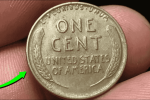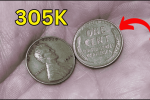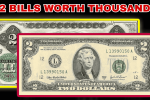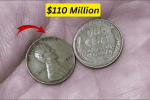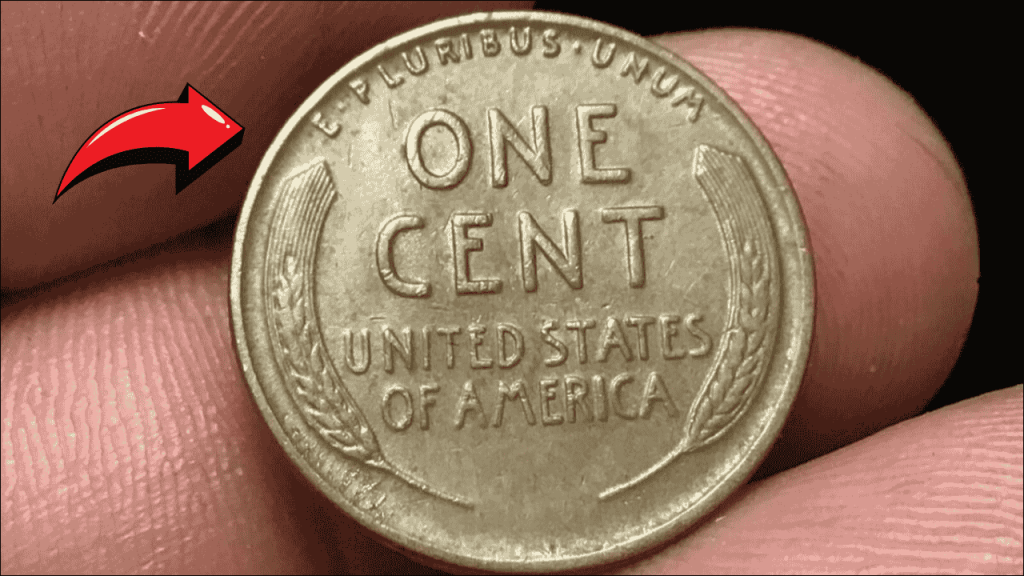
In the captivating world of numismatics, where history and fortune often intersect, one story stands above all others in capturing the public imagination: the legendary Lincoln Wheat Penny allegedly worth an astonishing $3 billion. This seemingly impossible valuation for a simple one-cent coin has transformed an ordinary piece of pocket change into America’s most mythical numismatic treasure. The tale of this elusive penny has inspired generations of collectors and casual observers alike to scrutinize their change with renewed interest, hoping against hope that they might discover a life-altering fortune hiding in plain sight.
The Birth of an American Icon: The Lincoln Wheat Penny
The story begins in 1909 when the United States Mint introduced the Lincoln Wheat Penny to commemorate the centennial of Abraham Lincoln’s birth. Designed by Lithuanian-American sculptor Victor David Brenner, these distinctive coins featured Lincoln’s dignified profile on the obverse (front) and two elegant wheat stalks framing the words “ONE CENT” and “UNITED STATES OF AMERICA” on the reverse side.
| Design Element | Description |
|---|---|
| Obverse (Front) | Abraham Lincoln’s profile facing right |
| Reverse (Back) | Two wheat stalks framing denomination and country |
| Designer | Victor David Brenner (initials VDB on some 1909 issues) |
| Composition | 95% copper, 5% tin and zinc (1909-1942, 1944-1958) |
| Diameter | 19.05 mm |
| Weight | 3.11 grams |
For nearly five decades, until 1958 when the wheat stalks were replaced with the Lincoln Memorial design, these pennies were an integral part of American commerce. They witnessed the nation’s journey through some of its most transformative periods, including:
- The Roaring Twenties and subsequent stock market crash
- The Great Depression and New Deal era
- World War II and the postwar economic boom
- The early Civil Rights movement
- The beginning of the Cold War
The Mystery of the $3 Billion Penny
What could possibly make a humble penny worth more than the annual GDP of many small countries? According to numismatic legends and various speculative reports, somewhere in circulation exists a truly unique error coin with extraordinary characteristics that would make it the most valuable coin in existence.
Several theories attempt to explain the mythical penny’s extraordinary value:
Theory 1: The Wartime Gold Error
During World War II, the U.S. Mint briefly produced steel pennies in 1943 to conserve copper for the war effort. According to this theory, a single planchet (coin blank) of pure gold or platinum was accidentally mixed with regular blanks and struck as a penny. Such a mistake would have created a one-of-a-kind error coin with intrinsic precious metal value far exceeding its face value.
Theory 2: The Double-Die Perfection
Some suggest the legendary penny features the perfect combination of multiple rare errors—perhaps a 1955 Double Die Obverse (already worth up to $17,000) combined with other mint errors like an off-center strike, wrong planchet, or other anomalies that create a truly unique specimen.
Theory 3: The Missing Wheat Penny
Another theory proposes that the legendary coin might be a missing transitional error from 1958-1959, when the design changed from wheat stalks to the Lincoln Memorial. A hybrid coin with Lincoln on one side and an unintended or experimental reverse design would be extraordinarily rare.
Historical Context: Valuable Wheat Pennies That Actually Exist
While the $3 billion penny remains elusive (and likely mythical), there are many genuinely valuable Lincoln Wheat Pennies that collectors regularly discover. These documented rarities provide context for why wheat pennies generate such excitement among collectors.
| Year/Type | Approximate Value (Uncirculated) | What Makes It Valuable |
|---|---|---|
| 1909-S VDB | $1,000-$2,500+ | Low mintage (484,000), designer’s initials controversy |
| 1914-D | $1,000-$5,000+ | Low mintage and poor preservation rate |
| 1922 Plain | $500-$25,000+ | No mint mark due to die error |
| 1931-S | $100-$200+ | Low mintage (866,000) |
| 1943 Copper | $100,000-$1,500,000+ | Error coin; should have been made of steel |
| 1944 Steel | $75,000-$125,000+ | Error coin; should have been made of copper |
| 1955 Double Die | $1,000-$17,000+ | Major doubling error on obverse |
The 1943 copper penny deserves special mention. When the U.S. Mint switched to steel pennies in 1943 to conserve copper for the war effort, a few copper planchets accidentally remained in the presses. The resulting copper 1943 pennies became some of the most famous error coins in American history, with fewer than 30 authenticated examples known to exist.
Could the $3 Billion Penny Still Be in Circulation?
What makes the story of the legendary penny particularly compelling is the tantalizing possibility that such a treasure could theoretically still be in circulation today. Unlike many rare coins that were quickly recognized and preserved, this mythical penny—if it exists—could be:
- Mixed in with ordinary change in cash registers across America
- Sitting forgotten in someone’s coin jar or piggy bank
- Stored in an inherited collection whose value remains unknown to its owner
- Lost in the cushions of furniture or in the corners of old homes
The democratic nature of this possibility—that anyone could potentially discover such a treasure—has helped fuel ongoing fascination with wheat pennies.
How to Identify Potentially Valuable Wheat Pennies
For those inspired to examine their own collections, here are the key characteristics to check when hunting for valuable wheat pennies:
Step 1: Check the Date and Mint Mark
The date is located on the obverse (front) of the coin beneath Lincoln’s bust. The mint mark, if present, appears below the date. Coins from San Francisco (S) and Denver (D) are generally rarer than those from Philadelphia (no mint mark).
| Key Dates to Look For | Mint Marks to Note |
|---|---|
| 1909 | S (especially with VDB) |
| 1914 | D |
| 1922 | D (or no mint mark) |
| 1931 | S |
| 1943 | Any copper penny (not steel) |
| 1944 | Any steel penny (not copper) |
| 1955 | Look for double-die errors |
Step 2: Examine the Condition
Coin condition dramatically affects value. Numismatists use a standardized grading scale:
| Grade | Abbreviation | Description |
|---|---|---|
| Poor | P-1 | Heavily worn, barely identifiable |
| Good | G-4 | Major design elements visible but heavily worn |
| Very Good | VG-8 | Design wear but clear details |
| Fine | F-12 | Moderate wear, all major features clear |
| Very Fine | VF-20/30 | Light wear on high points |
| Extremely Fine | EF/XF-40/45 | Minor wear on highest points |
| About Uncirculated | AU-50/58 | Minimal wear, some luster remains |
| Mint State | MS-60 to MS-70 | No wear, varying degrees of luster and contact marks |
Step 3: Look for Errors and Varieties
Mint errors often create valuable coins. Common errors to look for include:
- Double dies: Look for doubling in the lettering or Lincoln’s features
- Off-center strikes: When the image is not centered on the coin
- Repunched mint marks: When the mint mark was stamped multiple times
- Die cracks: Raised lines on the coin’s surface
- Wrong planchet errors: When a penny is struck on metal intended for another denomination
Modern Technology and Wheat Penny Hunting
Today’s collectors have advantages that previous generations lacked when searching for rare coins:
- Digital scales: Can precisely measure a coin’s weight to detect composition anomalies
- USB microscopes: Allow detailed examination of mint marks and potential errors
- Online databases: Provide instant access to information about rare varieties
- Authentication services: Can professionally verify discoveries
- Spectroscopic analysis: Can determine exact metallic composition without damaging the coin
These tools have democratized the hobby, allowing even casual collectors to identify potentially valuable specimens with greater accuracy than ever before.
Beyond Monetary Value: The Cultural Significance
While the search for extremely valuable specimens drives much of the interest in wheat pennies, their true significance transcends monetary worth. These humble coins represent:
- Tangible history: Physical connections to earlier eras of American life
- Artistic heritage: Examples of evolving American numismatic design
- Economic markers: Reflections of the changing value of money and materials over time
- Family connections: Often passed down through generations as starter collections
For many collectors, the sentimental value of a wheat penny received from a grandparent far exceeds any potential market value.
The Psychology Behind the Legend
The persistent myth of the $3 billion penny reveals something fundamental about human nature and our relationship with money and possibility. The legend endures because it embodies several powerful psychological appeals:
- The lottery mentality: The alluring possibility that life-changing wealth could be acquired through luck rather than labor
- Overlooked value: The satisfying idea that experts and institutions might have missed something that an ordinary person could discover
- Hidden in plain sight: The romantic notion that extraordinary treasures might be disguised as ordinary objects
- Democratic opportunity: The fact that anyone, regardless of background or resources, could potentially make the discovery
Whether or not the coin exists is almost beside the point; the legend itself has become culturally valuable, inspiring generations of Americans to develop an interest in numismatics and history.
The Legacy Continues
Today, more than a century after the first wheat pennies were minted and over sixty years since the last ones entered circulation, these coins continue to captivate collectors. Every discovery of a valuable wheat penny makes headlines, keeping the dream alive that even more remarkable specimens might still await discovery.
While finding the mythical $3 billion penny remains extraordinarily unlikely, the search itself provides lasting value:
- Educational opportunities: Learning about American history, economics, and metallurgy
- Intergenerational connections: Sharing collecting experiences across family generations
- Community building: Engaging with fellow enthusiasts at coin shows and online forums
- The thrill of discovery: Experiencing the joy of finding something special, whether worth $3 or $3,000
In this way, every wheat penny becomes a small ambassador of possibility—a tangible reminder that sometimes extraordinary value hides in the most ordinary places.
Frequently Asked Questions
How can I tell if my wheat penny is the legendary $3 billion specimen?
The legendary coin would likely have multiple distinctive characteristics, including unusual weight, color, and metallic composition. Professional authentication by a reputable numismatic service would be essential for any potentially valuable specimen.
What should I do if I think I have an extremely valuable wheat penny?
Store it safely in a non-PVC holder, avoid cleaning it, and consult a professional numismatist or authentication service like PCGS or NGC. Do not announce your discovery publicly until its authenticity has been verified.
Are wheat pennies still in circulation today?
Yes, although increasingly rare, wheat pennies can still occasionally be found in circulation. Most have been collected over the years, but some still appear in change, coin rolls, and old collections.
What’s the most valuable wheat penny ever actually sold?
The highest verified sale price for a Lincoln wheat cent was a 1943-D bronze cent that sold for $1.7 million in 2010. This exceptionally rare error coin is one of only a few known examples.
Does cleaning a wheat penny increase its value?
No, cleaning almost always decreases a coin’s value significantly. Collectors prefer coins with original surfaces, even if toned or tarnished. Never clean a potentially valuable coin.
How many wheat pennies were produced during their circulation?
Between 1909 and 1958, the U.S. Mint produced over 28 billion wheat pennies, making them one of America’s most abundant historic coins—though truly rare varieties represent only a tiny fraction of this number.

Isabell Johnson is a passionate writer known for captivating stories that blend imagination and reality. Inspired by travel, history, and everyday moments, She crafts narratives that resonate deeply with readers.
